By James W. Fatherree, M.Sc.
Of the wide variety of invertebrate organisms available to hobbyists, the tunicates are some of the least frequently seen for sale. Many are very colorful, looking like some sort of odd coral or sponge, and they’re very common in reef environments, too. However, there’s a good reason they’ve never become particularly popular in the hobby. Starvation is the issue, as these are yet another type of organism that depends on foods that are typically difficult to supply in quantity in aquarium systems. Regardless, they’re still seen for sale at times, and are occasionally found alive on quality live rock. And, being difficult to care for doesn’t mean they are impossible to care for. So, I’ll give you a good introduction to the tunicates and go over their basic care requirements, too.
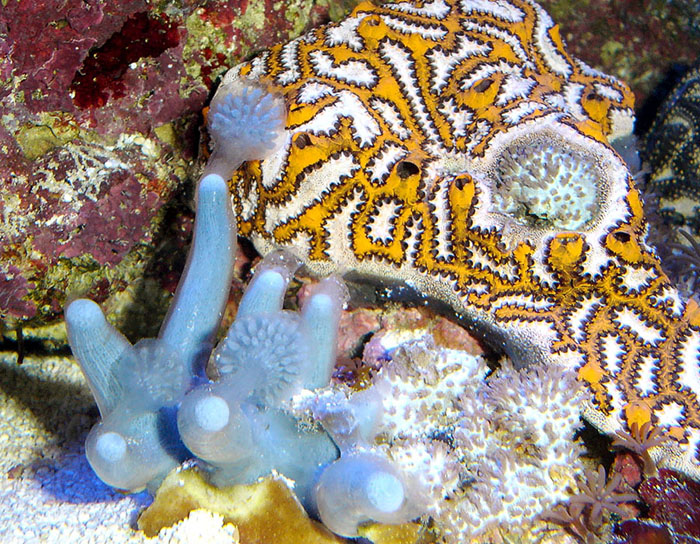
A specimen of the branching blue lollypop tunicate, Nephtheis fascicularis, in the foreground, with a gorgeous specimen of colonial Botryllus behind it.
To get started, oddly enough when tunicates are in their larval phase they look very similar to a microscopic tadpole. They have what appears to be a fat body and a flattened tail for swimming, and also have a rod-like notochord and hollow nerve cord that runs through their body. As strange as it might sound, possessing this spinal cord-like feature means they are placed in the biological group known as the chordates, which also includes the vertebrates. So, they’re actually more closely related to animals with a backbone than any of the rest of the invertebrates. But, they don’t develop a backbone and are invertebrates, nonetheless. Instead, the larvae undergo an extensive metamorphosis as they age, and everything that made them look anything like a vertebrate is lost in the process. Obviously, the adults look nothing like tadpoles anymore.
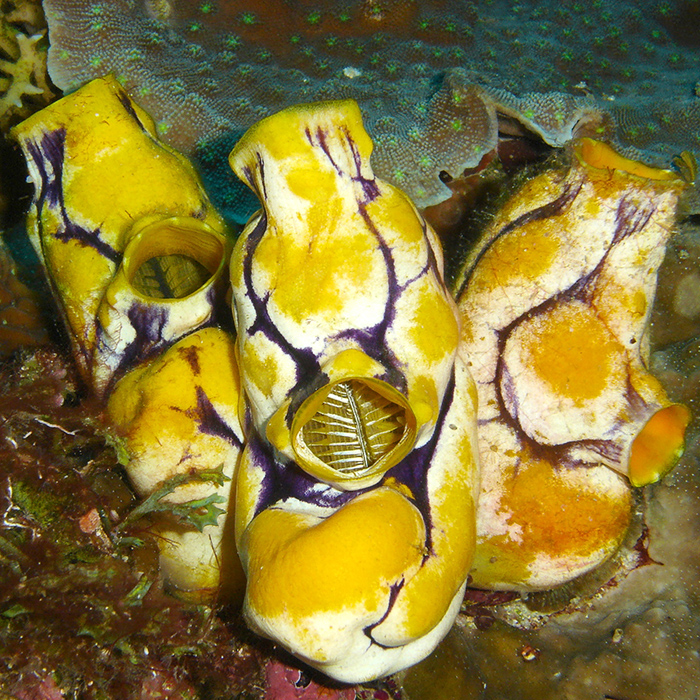
Three golden sea squirts, Polycarpa aurata, which can grow to a few inches in size. Part of the pharynx, inside the atrial siphon is visible in the center individual.
Aside from these things, all of the different sorts of tunicates share numerous other traits and features. For example, all of the tunicates are considered to be marine organisms, although there are some species that may be found in brackish waters, too. Their bodies are always covered by a complex skin, better called a tunic as well, which is obviously where their name comes from. This tunic is typically quite thick (for such a small critter) and is tough and leather-like. However, at times it may be much more delicate and thin, and actually rather transparent. It is flexible and can expand and contract, is also strengthened by numerous structural fibers made of a unique compound called tunicin, and may contain carbonate bits and pieces, or may incorporate grains of sand, as well.
The tunicates are also divided into three groups, which are the thaliaceans, the larvaceans, and the ascidians, with the first two being adapted for a planktonic lifestyle and the latter being bottom-dwellers. By planktonic I mean they just float around or weakly swim in the water, while the ascidians live attached to the seafloor or some other surface. However, as best as I know, none of the planktonic tunicates have ever been kept in aquariums, and I can’t imagine how it could be done, so I’m not saying anything else about them here. Instead, we want to focus on the ascidians, which often go by the common name “sea squirts.”
Individual ascidians can be fairly large, with the biggest of the species reaching a size of several inches in length and girth and looking a lot like a potato. That’s just one individual sea squirt, though. Ascidians can also form colonies comprised of as many as several thousand zooids (that’s what they’re called when living in a colony), which can form small mounds, oddly branching structures, or encrusting mats covering large areas of seafloor at times. However, the zooids that make up a colony are especially small compared to solitary ascidians, and are either connected by strips of flesh called stolons, or share a common tunic that completely covers all of them. If you have ever taken a good look at encrusting soft corals like star polyps or clove polyps, you can see the same sort of thing (but no, they aren’t all related).
The majority of the ascidians are found in shallow waters and typically attached to hard substrates like live rock, coral rubble, or even live corals. However, there are a few that live on soft bottoms and in deep waters, too. Of course, those from deeper areas aren’t the ones that would be available to hobbyists, as they would be difficult for divers to collect.
As far as appearances go, they’re often very colorful and the upper surface typically has two openings. These are the buccal and atrial siphons, which are the holes where water moves into and out of the body chamber. When in colonial form, things can get just a little fancier though, with each zooid having its own buccal (in) siphon, but sharing a common atrial (out) siphon with other zooids.
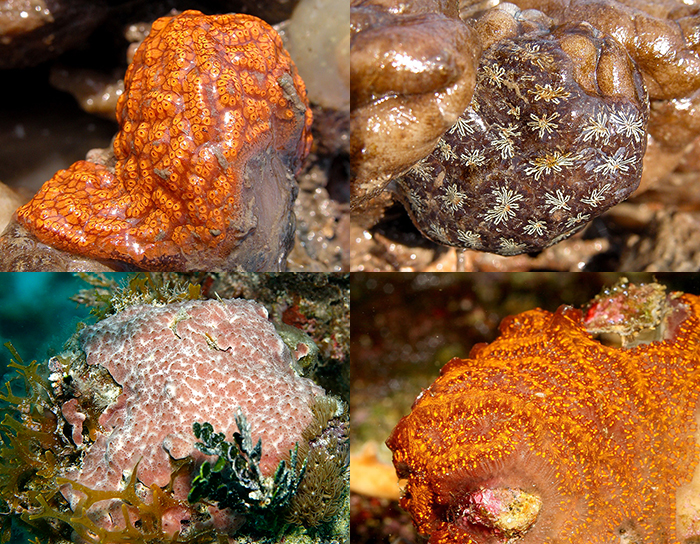
These are examples of typical colonial of ascidians. The relatively tiny zooids are fused together and
share a common tunic.
Down inside the siphons things get much, much more complicated, though. Ascidians have many of the same sorts of organs and systems that other “higher” animals possess, including a heart, a digestive tract, various muscles, and male and female reproductive organs, etc. They have a specialized gill structure too, which is also used for feeding and is called the pharynx. I’ll say more on that in a minute.
The last thing I’ll add in here is that ascidians can also contract tightly and close down, especially solitary species, and can seal up the siphons as a response to disturbances or the presence of unwanted particulate matter in the water. At times they can do this rather rapidly, which can actually shoot water from the siphons, and that’s where the sea squirt name comes from.
With few exceptions the tunicates are filter feeders that strip particulate matter from seawater as it passes through the pharynx/gills. Tiny hair-like cilia line the gills and they can beat in a rapid rhythm to create a surprisingly strong current of water. This draws water into the buccal siphon and moves it through the pharynx, which looks something like a slotted basket. Then, after passing through the slots, the water moves out of the atrial siphon minus any food particles collected. The way everything is set up, all of the incoming water is strained of food, as all of it must pass through the basket.
It’s more complicated than simply straining the water through slits, though. Specialized structures produce a thin mucus net that lines the pharynx, and when water comes through, food particles are trapped in the mucus. The mucus net is constantly moved across the gills by cilia, and as food is collected the net is rolled up into a thin cord, which is then moved to the esophagus.
This whole process allows them to efficiently capture a range of fine particles from small phytoplankton all the way down to bacteria, which are taken into the esophagus and eaten. The food is then digested and fecal pellets are cast out of the ****, which is located near the atrial siphon. They are carried right on out in the current flowing through the siphon.
There are also a few ascidians that host microscopic symbionts. Some house algal and cyanobacterial cells within their tissues, and can thus get some food from sources other than what’s filtered from the environment. However, I don’t think these can rely on their symbionts to the degree that reef-building corals and their cousins can.
When diving around reefs, you can find various sea squirts here and there if you look closely, and in some places they are very common. In fact, in some spots I’ve visited they have been literally everywhere, in all sorts of shapes, sizes, and colors. I’ve found them on boat hulls, in tidepools, on rocky shores, and even in a drainage canal. And, as I mentioned, they’re sometimes found on high-quality aquacultured live rock, and you’ll probably see some nice specimens for sale from time to time. So, with that kind of presence you might think they are rather durable and could do well in an aquarium, but they don’t.
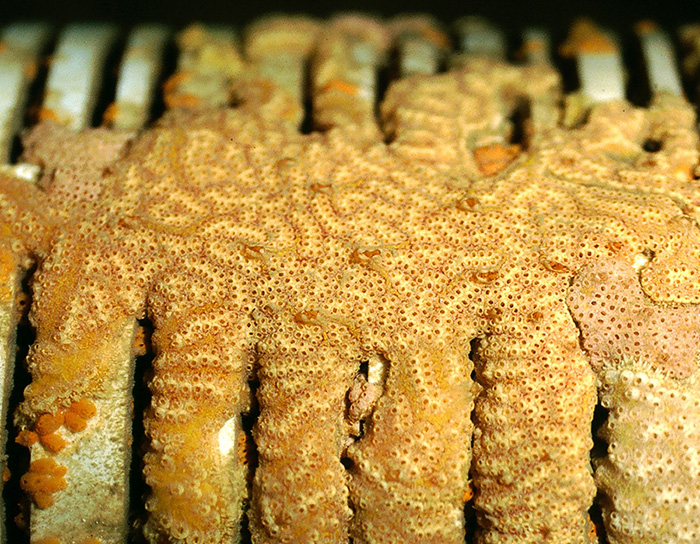
This colony (likely Botryllus) appeared on the overflow drain of a large live rock holding system and grew to a large mat in a matter of months.
Again, the bad news is that, as a whole, the sea squirts tend to be very difficult to keep alive in aquariums. Very difficult, indeed, which is the reason they don’t share the spotlight with corals and such at the aquarium shop. If they were easy to care for, I’m sure they would be seen for sale everywhere. No such luck for us, though.
To the contrary, they are difficult to maintain in aquaria for the same reason that many other filter-feeding animals are. Aquariums generally just don’t contain enough of the right kind of foods to keep them alive long-term, and many specimens need more than what we can add safely. Especially if they are large in size, or present in large numbers.
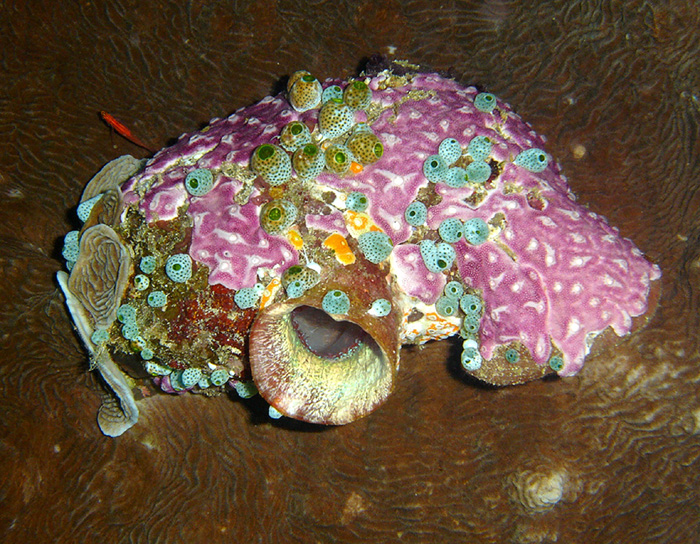
Three species of ascideans growing on top of another larger species, all on top of a live stony coral.
Those that have come in on live rock haven’t lived long in my experience, and frankly, neither have most all of the specimens that were purchased as separate items. I do think that those that come on live rock are more likely to die anyway, due to rough handling and exposure to air, though. As best as I can tell, exposure seems to be particularly bad for many (but not all) of the colonial forms, as they typically sort of melt away and disintegrate within a few days of being introduced to a tank, while solitary ones have fared a little better. I’m think it’s possible that some can close down tightly enough to hold in some water and keep air out, but there could be other reasons, of course.
However, over the last few years, in mature tanks with well-stocked deep sand beds, I’ve seen a marked increase in the survival of tunicates (and everything else that eats plankton and bacteria for that matter), including sponges and filter-feeding worms. Healthy, established systems can produce much more particulate matter in many forms than a new system can, and the inhabitants can take advantage of this.
The careful use of quality phytoplankton foods has helped many of them survive, too. The key is finding a balance between how much food can be added to help filter-feeders without adding so much that water quality is affected negatively. That can be a difficult task, but certainly not impossible by any means. You just have to be careful not to overdo it, as overdosing your aquarium with phytoplankton, even if it’s alive, can lead to increased nutrient levels. This will invariably lead to the growth of unwanted algae, which we don’t want.
With all this in mind, I’ll sum things up by saying that if you don’t have a well-established, mature tank, and/or don’t want to deal with regularly adding a quality phytoplankton food, you should leave the sea squirts alone. I’d tend to say that a D.S.B. or some sort of food producing refugium is a requirement too, but I have seen a handful of small tunicates survive long-term in a few bare bottom reef tanks in the past. Very few, though. As frustrating as it may be, the fact is that there are still quite a lot of filter-feeding organisms (like carnation corals, many sponges, sea lilies, etc.) that have downright pathetic survival rates in aquariums no matter what you may do to try to keep them alive. Maybe the day will come when these can be routinely kept alive and well, but we’re not there yet.
As a last note, if you think you have an appropriate system and are willing to do what it takes to properly care for sea squirts, I’ll remind you to buy something small. As I always say, it’s better to see if you can keep a small specimen alive and let it grow into a larger one, rather than buy a big one that requires more food and has a greater chance of starving to death. You should also do as much research as you can on any particular species you are interested in before you buy it – not after.
References
Rupert, E.E., R.S. Fox, and R.D. Barnes. 2004. Invertebrate Zoology: A Functional Evolutionary Approach: 7th ed. Brooks, Cole, Thomson, Belmont CA. pp 963.

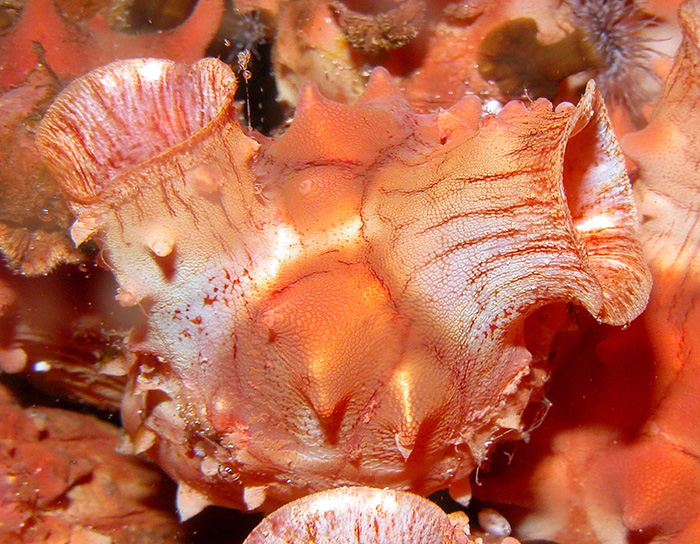
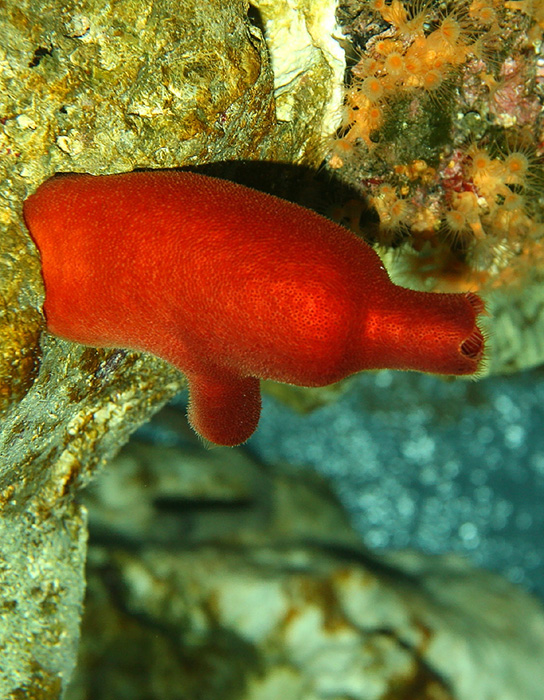
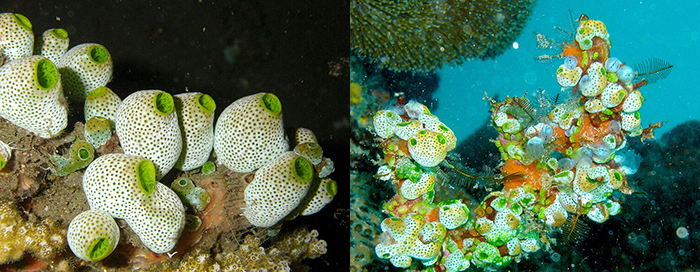

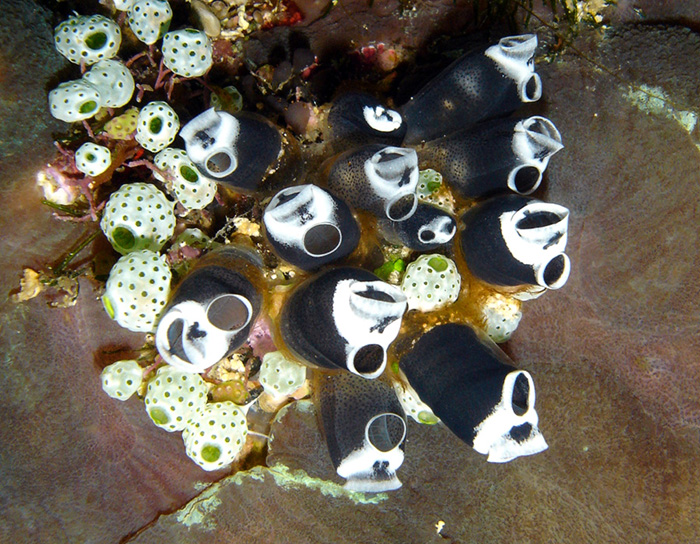

Thanks for that informative article on tunicates, it has helped me decide against purchasing a tiger tunicate about the size of a baseball. I look forward to reading more of the articles you have written. Best, JD